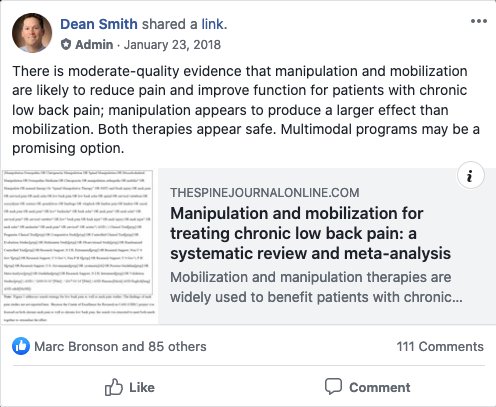Manipulation and mobilization for treating chronic low back pain: a systematic review and meta-analysis There is moderate-quality evidence that manipulation (ie, thrust) interventions may produce small-moderate reduction in pain intensity compared with other active comparators such as exercise. Thrust interventions are also likely to reduce disability for patients compared with these active comparator interventions. The effect seems to increase over time at 3 and 6 months follow-up. There is moderate-quality evidence that mobilization (ie, non-thrust) interventions are likely to have minimal effect compared with other active comparators in terms of reducing pain intensity or disability. Multimodal programs may be promising options. More research is needed to assess other important patient reported outcomes in order to strengthen the evidence base regarding mobilization and manipulation for reducing disability and increasing HRQoL for patients with chronic low back pain. The research to date is still heterogeneous, and questions remain about optimal treatment duration, dose requirements, practitioners to be involved, and the kinds of patients who may benefit the most.

#science #chiropractor #chiropractic #research #education #evidence based #patient centered #interprofessional #collaborative #rehabilitation #public health #spinal health #musculoskeletal health #ethics #pain #function #disability #QOL #knowledgetranslation


